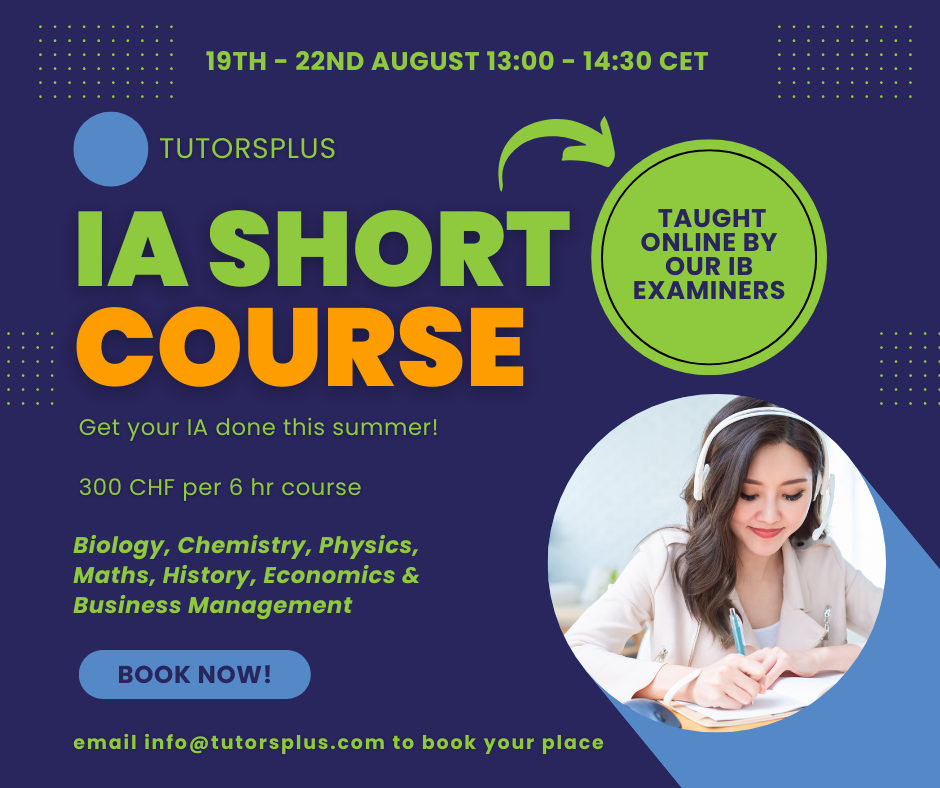IB History Paper 1: expert tips for a stress-free exam success

Melina is a certified IB History teacher, with over 20 years of experience, and also supervises Extended Essays and IAs. She has been an IB Examiner since 2014. She has a master’s in Sociology and before becoming a school teacher was a History professor at the University of Buenos Aires. Here she shares her expert tips for success in IB History paper 1.
Article reviewed & updated by Melina, 11th June 2025
IB History Paper 1 is a high-pressure 60-minute test of your ability to analyse historical sources tied to your prescribed subject. With four questions worth 24 marks, every point counts. How do you make sure that you don’t leave these valuable marks on the table?
This History Paper 1 guide provides expert tips on effective exam-answering techniques. We also discuss common mistakes and ways to avoid them as well as how to study for your Paper 1.
As an IB Examiner for over 10 years Melina knows exactly how to approach this paper. Read on to learn how she recommends to approach your exam with confidence and achieve your best results.
Need help with IB History?
What is the IB History Paper 1 exam?
The first stage of the IB History external assessment is a one-hour-long Paper. It is based on the prescribed topic of the syllabus and requires you to work with the provided historical materials. Those are a mixture of primary and secondary sources such as excerpts from historical documents, journals, cartoons, photographs, statistics, and others (typically, up to 200 words each). Your tasks will include source comparison, evaluation, answering short questions, as well as writing an essay.
IB History Paper 1 awards 24 marks and is similar for SL and HL. At the same time, it has a different weight in the exam structure for both Levels, with 30% and 20% for SL and HL, respectively.
IB History Paper 1: structure and format
Paper 1 in IB History comes with a question booklet and source booklet. It features 4 questions in total, each referring to related source materials.
- Question 1 brings 5 marks and consists of two parts:
- Question 1a (3 marks) is about reading comprehension skills, such as identifying and describing details. You don’t need to analyse or interpret information. Typically, questions are formulated as ‘What, according to Source A, are the reasons/consequences/etc. …’;
- Question 1b (2 marks) will ask you to interpret the message of the source: ‘What is the message conveyed by …’ or ‘What does Source B say about…?
- Question 2 (4 marks) requires you to discuss the value and limitations of the source in a given historical context. The wording is usually the following: ‘With reference to its origin, purpose, and content, assess the value and limitations of this Source for historians studying…’
- Question 3 focuses on contrasting two sources and brings a maximum of 6 marks. Specifically, you need to analyse how two sources see the same event and which perspectives they have. You can expect something like ‘Compare and contrast what Source X and Source Y reveal about …’ or ‘Compare and contrast the views expressed in Source X and Source Y’, or ‘To what extent do Source X and Source Y support the views in …’.
- Question 4 has a mini-essay format. Using the evidence the source provides, as well as your own knowledge, you need to provide a balanced argument concerning a specific historical event. You can earn 9 marks here. The question usually has this wording: ‘Discuss why an event occurred/action was taken’ or ‘Assess the significance…’
To find out about other parts of the exam and how to nail them, read our blog on how to get a 7 in IB History.
IB History Paper 1: answering techniques
Question 1
The first question in IB History Paper 1 doesn’t require any analysis. You just need to read the source carefully and identify facts, details, and the message it conveys. You don’t have to provide outside knowledge, but you may refer to the historical context. To earn 3 marks for Question 1a, you must make three valid points, while Question 1b requires at least two clear points with evidence.
Melina insists you shouldn’t spend more than 7 minutes answering both parts of Question 1 and has these tips for saving time.
- Before you start the examination, you will have 5 minutes of reading time. In that time, you can’t write or make notes, but should definitely focus on question 1b and solve it mentally, so when they allow you to start writing you don’t devote time to the interpretation of the image and you start answering immediately.
- Question 1a, you can answer with bullet points. Using bullet points is time saving!
- You need to present both your own words and some reference to the source (paraphrase or short quote).
Question 2
Question 2 is about the values and limitations of the source material based on its origin, purpose, and content. Melina emphasises the importance of going beyond description and ensuring you critically analyse and interpret through every step of your OPCVL analysis: “Describing simply does not give you relevant marks”. Here’s how Melina recommends approaching it:
- Origin – interpret how who, when, where has impacted the information you get from the source material;
- Purpose – what was the goal of creating this source (keep in mind, you need to talk about the source as a whole, not just an extract), and how this goal can be relevant for learning about the topic;
- Content – mention what this source talks about and why this is important/useful to learn about the topic;
- Value – make an argument about why you believe this source is useful for historians who study this topic;
- Limitations – discuss anything the source overlooks and point out if it has a bias.
Your answer should have two paragraphs, one dedicated to Value and the other to Limitations. Melina recommends that:
- In each of these paragraphs, explicitly mention what aspect of the O, P and C are a Value and what aspects of OPC are a Limitation.
- The Origin, Purpose, and Content should guide your argumentation and help you seek out evidence. Ideally, you should provide two Values and two Limitations.
- Make sure to focus specifically on the source rather than making assumptions about its type, such as primary sources reflecting only the author’s perspective or secondary sources lacking direct involvement in the event.
It should take about 10 minutes to answer Question 2.
Question 3
When it comes to Question 3, it is about comparing and contrasting two sources. Therefore, Melina recommends the following:
- Fitting your reply into two paragraphs – one for the points on which the sources agree and the other for their differences. Remember, for every claim, there must be evidence. Therefore, make sure to include facts and quotes from both sources.
- Keep in mind that sometimes questions focus on a specific topic. In this case, you need to compare and contrast the materials in relation to this topic instead of analysing sources as a whole: For full marks, you must have at least 3 points and show both similarities and differences.
Typically, Melina believes 10 minutes suffice to provide a balanced and well-argued answer.
Question 4
The final question in IB History Paper 1 leans on the data from sources and your knowledge of the subject alike.
If you build your answer only around the sources or, vice versa, only using your knowledge, you will receive only 5 marks out of 9.
When writing the mini-essay, Melina tells her students to:
- Start with an introduction where you summarise the question itself, mention your sources, as well as include your thesis. You may also briefly mention a historical context.
- Next, in the body paragraphs, you need to provide at least two arguments (one for each paragraph) and reference the sources for evidence.
- Again, don’t forget to include information from external sources to support your claims. For each body paragraph, you must provide a short conclusion, no more than a sentence long.
- Within the body paragraphs, Melina says to “make sure that it is clear what part of your argument comes from the sources and what from your own knowledge to show you´re fully answering the demands of the question. For example, you can say something along the lines of “Source A indicates that xyz, and this is further supported by my own knowledge because…
- Finally, write a general conclusion for your essay, where you summarise the results and explain how you reached them. It makes sense to restate the initial question and provide a clear answer based on the findings you discussed in the body paragraphs.
Allocate at least 25 minutes to write this mini-essay.
For additional strategies on structured writing, you can also draw inspiration from how IB Maths tutors structure logical arguments or how IB Physics tutors present concise explanations.
Common mistakes in IB History Paper 1 to avoid
It is a common belief among students that Paper 1 is easy because it is about source analysis skills rather than subject knowledge. Still, what you need to do with these sources, from comprehension to essay writing, requires precision. Otherwise, you won’t be able to contribute many points to the overall score.

Below are some things that can cost you valuable marks:
- Misinterpreting the Question
A classic error is rushing into answers without fully understanding the question. It is especially critical for Question 4’s mini-essay, since command terms like ‘evaluate’ or ‘to what extent’ will require a slightly different approach to your reply. For example, if asked, ‘To what extent was the treaty/policy/etc. successful?”, you need to focus on weighing success versus failure. In the case of ‘evaluate’ question, you may heavily focus on positive aspects while discussing negatives only briefly.
- Poor Time Management
This is often a challenge in Paper 1. If you give yourself the luxury to move slowly through the first questions, you are at risk of rushed answers for questions that bring more marks. Therefore, you need to regularly practice answering sample questions under timely conditions and stick to reasonable time frames for every type of question;
- You don’t fully apply the OPCVL method for your analysis, or make your points too vague
You can note, for example, that a source has a bias, but that can’t be it. You need to be more precise and explain where this bias comes from and how it affects the credibility of the source. Melina insists “you must avoid describing what the source says or copying the title of the source. It is fundamental to show that you’re focused on the V and L for studying a particular issue.
- Weak comparisons
In Question 3 weak comparisons are another thing that will cost you marks. Melina says beware of just listing differences without explaining how or why sources vary. She says:
“You can´t get significant marks if you only describe sources. You must explicitly show in what aspects they coincide and where they differ.”
- Lack of your own knowledge
In Question 4, not introducing your own knowledge will reduce your mark gain twice. That’s why it is important to blend the sources (all of them!) and what you know about the topic. The sources may miss important details, such as why these events occurred, their significance, or broader historical implications. Your knowledge is supposed to fill these gaps.
- A disorganised mini-essay
This can confuse examiners and weaken your argument. If you miss an introduction, clear paragraphs, or conclusion, you are at risk of getting fewer marks than you expect. Stick to the PEEL-based body paragraphs to build your argument while adding compelling opening and concluding statements to frame your analysis.
They say, forewarned is forearmed. Now that you know where your possible mistakes may lie, you can adapt your answering technique to avoid them.
Key tips to pass the IB History Paper 1 exam successfully
Are you wondering how to prepare for IB History Paper 1 to gain all 24 marks available? Let us guide you. Below, you will find tips on how to provide answers that fully meet examiners’ expectations.
Practice with IB History past papers regularly
Past paper practice is perhaps the most reliable way to study for your IB History Paper 1. The best thing about them is that they help you get comfortable with the exam format and figure out how to apply your skills within the 60-minute limit.
Although Paper 1 is relatively short, it throws varying tasks your way. In other words, there is a lot to juggle. The only way to get good at it is to practice.
Since past papers provide actual exam assignments from previous sessions, they can show you what to expect during your upcoming assessment. The question formats, wording, and themes – they all remain more or less the same from year to year. If you get used to what Paper 1 has in store for you, there won’t be surprises on exam day.
Past papers are also excellent indicators of your weaknesses. There are many things that can trip you up, from a weak OPCVL analysis to a convoluted essay structure. The knowledge of the prescribed topic matters as well, and if you fail to show it, you will deprive yourself of valuable marks. Past paper practice will reveal whatever you struggle with and give you a chance to strengthen your skills.
Last but not least, past papers can help you get used to time pressure. Your chances of writing a convincing essay will soar if you know that you can do it in under 25 minutes. The more such exercises you do during your revision, the better you’ll get at time management.
Know IB History Paper 1 requirements
There are no formal assessment criteria for exam Papers. However, IB History mark schemes can give you a good idea of what examiners expect in your answers. Each type of question in Paper 1 comes with its own set of requirements, which you should get to know. Go back through and read our answering techniques above to see how to maximise your points in each question.
Sometimes your teacher will guide you with advice from the examiner’s reports as well as the IB History Paper 1 mark scheme. The mark scheme talks about the requirements for your answers, while the examiner’s report can show specific examples to discuss whether students were able to meet those requirements and the reasons why they couldn’t. In other words, they reveal exactly what earns top marks and what trips up most students. For instance, examiners’ reports often point out that too many answers simply restate sources instead of analysing their meanings.
Recurring comments in these reports are worth paying attention to. Often, examiners flag weak thesis statements or shaky linkages between evidence and argument. You can highlight those points in each report and compare them with your own answers as you practice with past papers. This way, you can build a checklist of dos and don’ts for your replies.
Ensure effective time management
IB History Paper 1 is a rather quick first stage of your external examination. If you waste precious minutes on one of the questions, you may not have time to tackle the rest. We’ve seen students who spent too much time answering Questions 1-3 and then rushing to write the essay. This makes them cut corners or skip steps just to ensure they have something to submit. Clearly, you can’t expect any good marks for analytical work that simply wasn’t profound enough. Therefore, time management is critical for Paper 1.
As a rule of thumb, you need no more than 7 minutes to write answers for Question 1, 10 minutes for Question 2, and 15 minutes for the Compare and Contrast Question 3. This leaves you with about 25 minutes for the essay, including the time for proofreading.
Melina recommends completing the questions in order: “The best way to approach the paper, given that you´ll have no time to re-read the sources, is to do the questions in the given order, so when you get to the essay you already know what each source says.”
Get quick at identifying key information
It is more than possible to keep to these time limits if you get used to quickly scanning your sources and identifying the key details. Before you start reading, look closely at the question itself and find out exactly what it wants you to do. Highlight keywords to keep your focus. If you need to identify the reasons or consequences of an event, filter out anything that doesn’t relate to the tasks at hand.
The same goes for other types of questions. You need to train your eye to notice the key information and ignore everything that is not exactly useful for your reply. We suggest always underlining important information – this will help you quickly find it in the text as you craft your answer.
Understand the prescribed subjects in IB History Paper 1 themes
Many students believe that to ace Paper 1, they just need to master source analysis. However, it is only half true. Yes, you will find a lot of answers right in the sources, but without the knowledge of your prescribed subject, your analysis just won’t be convincing.
All the sources you will be working with are tied directly to your prescribed subject. The exam tests your ability to break these down by looking at their origin, purpose, content, and limitations. But if you don’t know the context of what the sources are talking about, you’re stuck. Moreover, you need to provide reasons, implications, consequences, etc. of the events in question, and the source materials won’t specify those. You will have to rely on what you learned during your IB History course.
How do you get there? The best approach is to break the prescribed topic into bite-sized pieces. We suggest listing out the main events, figures, themes, causes, and consequences. It is also important to look at the bigger picture, i.e. how these moments shaped the world. Connecting the dots like this can help the critical details of the topic stick. Viewing documentaries or podcasts can make history feel real and help you see it from different angles.
Summing up, you need to know your prescribed subject so well that when you receive previously unseen source material, you can instantly place it in context and start your analytical work.
Refine your writing style
Question 4 carries 9 marks – it is more than a third of all the marks you can earn in IB History Paper 1. However, these are challenging to get since you are required to produce a compelling, source-based essay that also showcases your historical thinking. Still, good source analysis and knowing the historical context won’t automatically bring you top marks. Your essay writing skills must also be on par.
How to ensure your essay has a logical structure and natural flow? We suggest sticking to the PEEL method to structure your paragraphs. The abbreviation stands for:
- Point – you first state your point (i.e. an argument);
- Evidence – provide evidence to support your claim (facts, quotes, names, dates, etc.);
- Explanation – explain how your evidence backs up your argument and why it matters. For instance, for essays on the topics related to World War 1, alongside the fact that it started in 1914, you can state what triggered it (the assassination in Sarajevo) and what the implications were (e.g. it exposed the fragility of pre-war alliances). Don’t forget to showcase your knowledge of the prescribed topic here;
- Link – connect your point to the essay question or thesis statement. This can involve a brief summary of your argument, connecting it to the next paragraph, or highlighting its significance.
The PEEL method is an excellent way to build the main paragraphs in your essay. You need to provide (at least) two arguments, therefore, there must be two such paragraphs in the main body. At the same time, you should keep the academic writing standards, and these require you to begin your writing with an introduction and wrap it up with a conclusion.
In the introduction, you may restate the question and then immediately specify the key points you’ll be talking about further in your writing. For example, if the question asks about a policy’s impact, you might argue, “Its immediate benefits were overshadowed by long-term chaos”. After outlining your arguments, briefly talk about how you are going to prove them.
When it comes to the conclusion, you need to summarise your points and discuss their significance. Again, you should apply your broader knowledge of the subject to talk about the consequences of an event or how it affected subsequent developments.
Make your IB History Paper 1 preparation with our expert tutors
Now you know how to approach your IB History Paper 1 preparations. Nevertheless, knowing how to answer those questions and answering them correctly are not the same things. How do you know that your source evaluation and comparison, let alone the essay, are on point?
Surely, you can self-assess your answers, but do you really have the expertise of an experienced examiner?
This is something we are happy to offer with Melina and our other highly qualified IB History tutors.
TutorsPlus is a reliable tutoring service providing access to certified IB History teachers and examiners. They helped hundreds of students like you achieve their best with targeted practice and feedback on their performance. They can point out exactly what your answers are lacking and how to fix that. No more doubts or guessing. Their guidance is exactly what you need to hone your analytical skills and head to the exam with confidence.Our IB History tutors are available at +41 22 731 8148 or . Don’t hesitate to contact us if you need help with writing convincing historical essays, evaluating source materials, or drawing parallels between various sources. We’ll be glad to provide the support you need to minimise the stress of taking your IB History exam.











